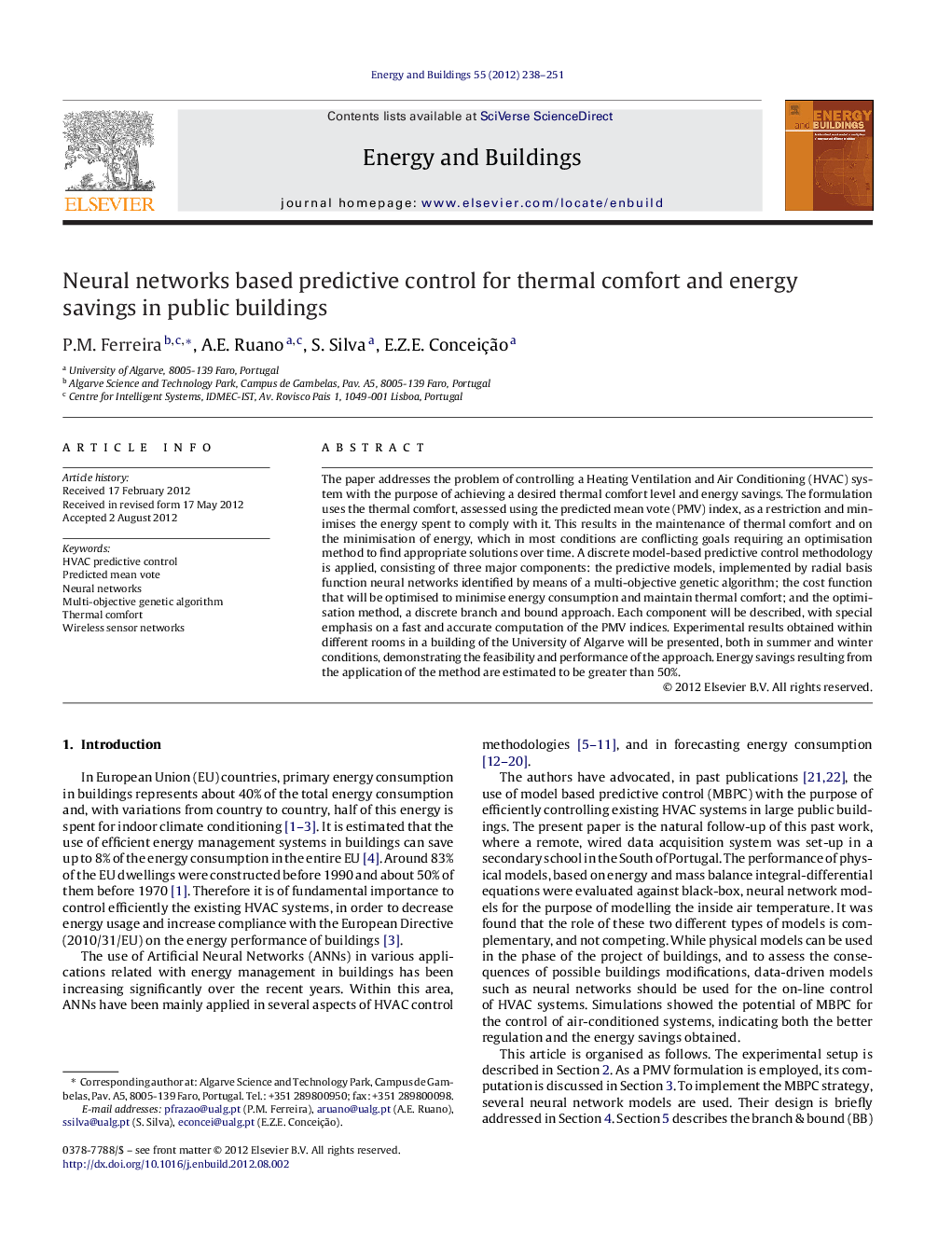| کد مقاله | کد نشریه | سال انتشار | مقاله انگلیسی | نسخه تمام متن |
|---|---|---|---|---|
| 263832 | 504085 | 2012 | 14 صفحه PDF | دانلود رایگان |

The paper addresses the problem of controlling a Heating Ventilation and Air Conditioning (HVAC) system with the purpose of achieving a desired thermal comfort level and energy savings. The formulation uses the thermal comfort, assessed using the predicted mean vote (PMV) index, as a restriction and minimises the energy spent to comply with it. This results in the maintenance of thermal comfort and on the minimisation of energy, which in most conditions are conflicting goals requiring an optimisation method to find appropriate solutions over time. A discrete model-based predictive control methodology is applied, consisting of three major components: the predictive models, implemented by radial basis function neural networks identified by means of a multi-objective genetic algorithm; the cost function that will be optimised to minimise energy consumption and maintain thermal comfort; and the optimisation method, a discrete branch and bound approach. Each component will be described, with special emphasis on a fast and accurate computation of the PMV indices. Experimental results obtained within different rooms in a building of the University of Algarve will be presented, both in summer and winter conditions, demonstrating the feasibility and performance of the approach. Energy savings resulting from the application of the method are estimated to be greater than 50%.
► A wireless sensor network data acquisition system was deployed in a public building.
► RBF models were identified by GAs for thermal comfort, weather and rooms environment.
► A predictive controller was implemented to keep thermal comfort and minimise energy.
► Summer and winter tests show savings above 50% when compared to normal HVAC control.
Journal: Energy and Buildings - Volume 55, December 2012, Pages 238–251